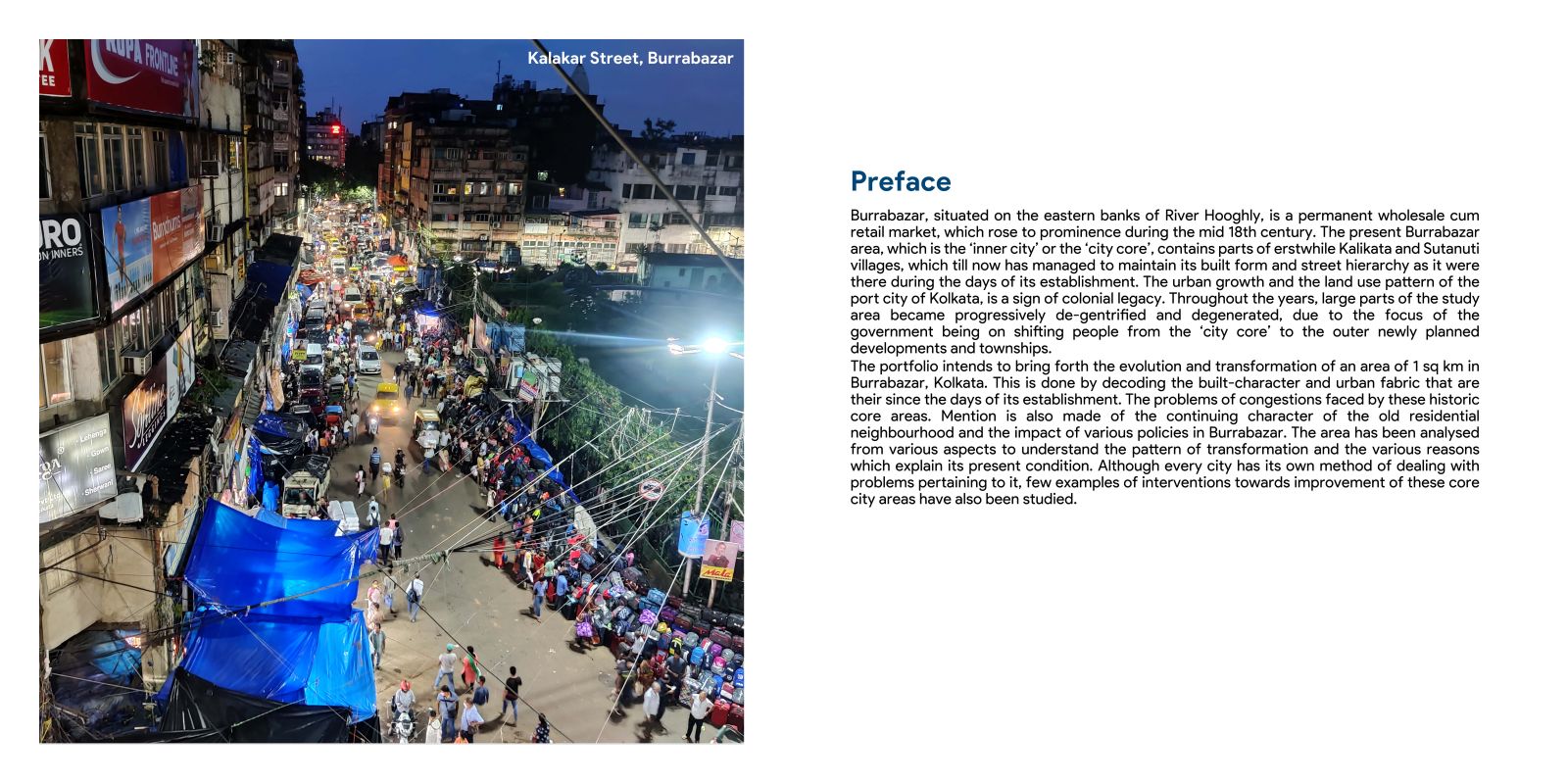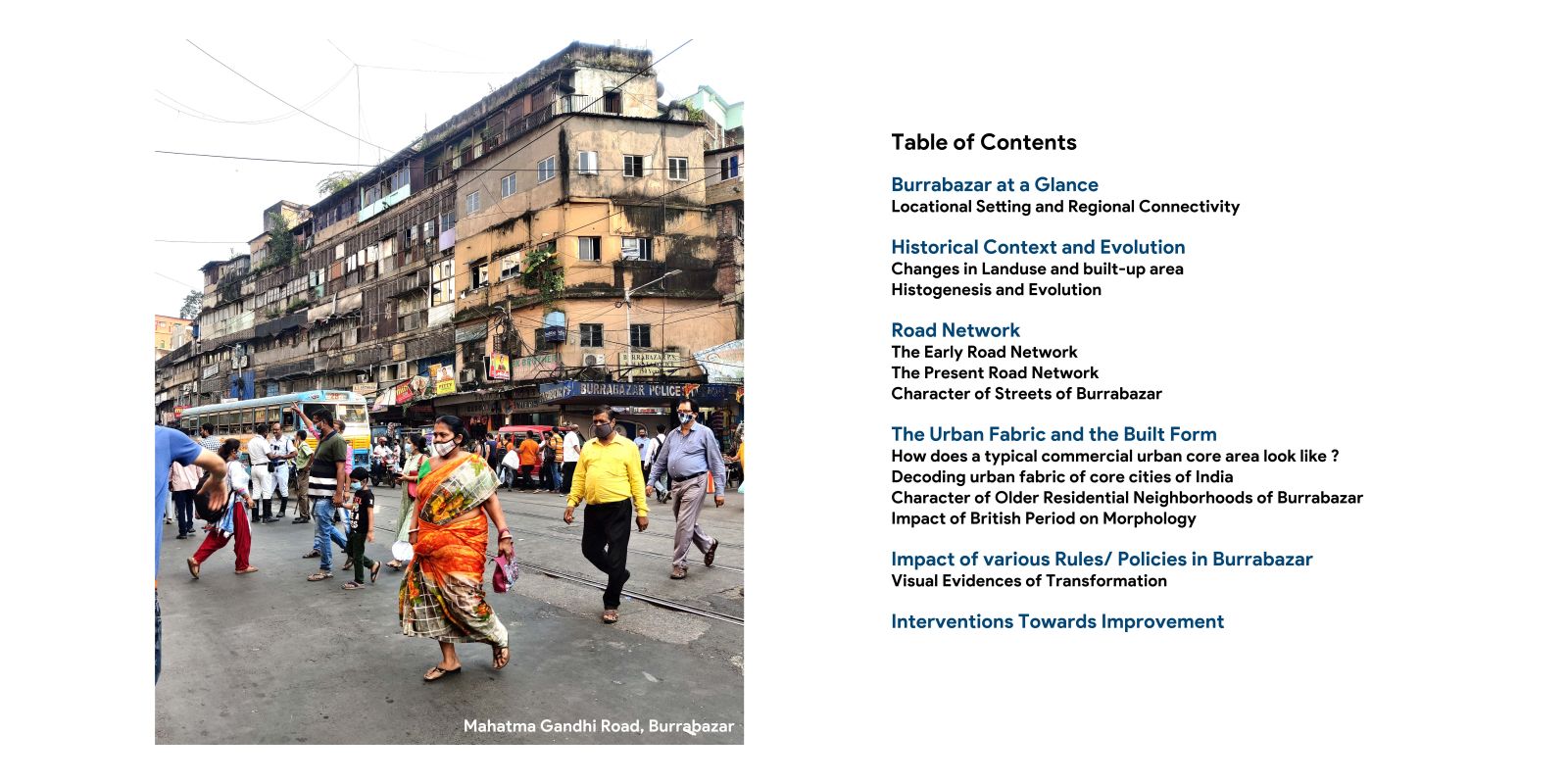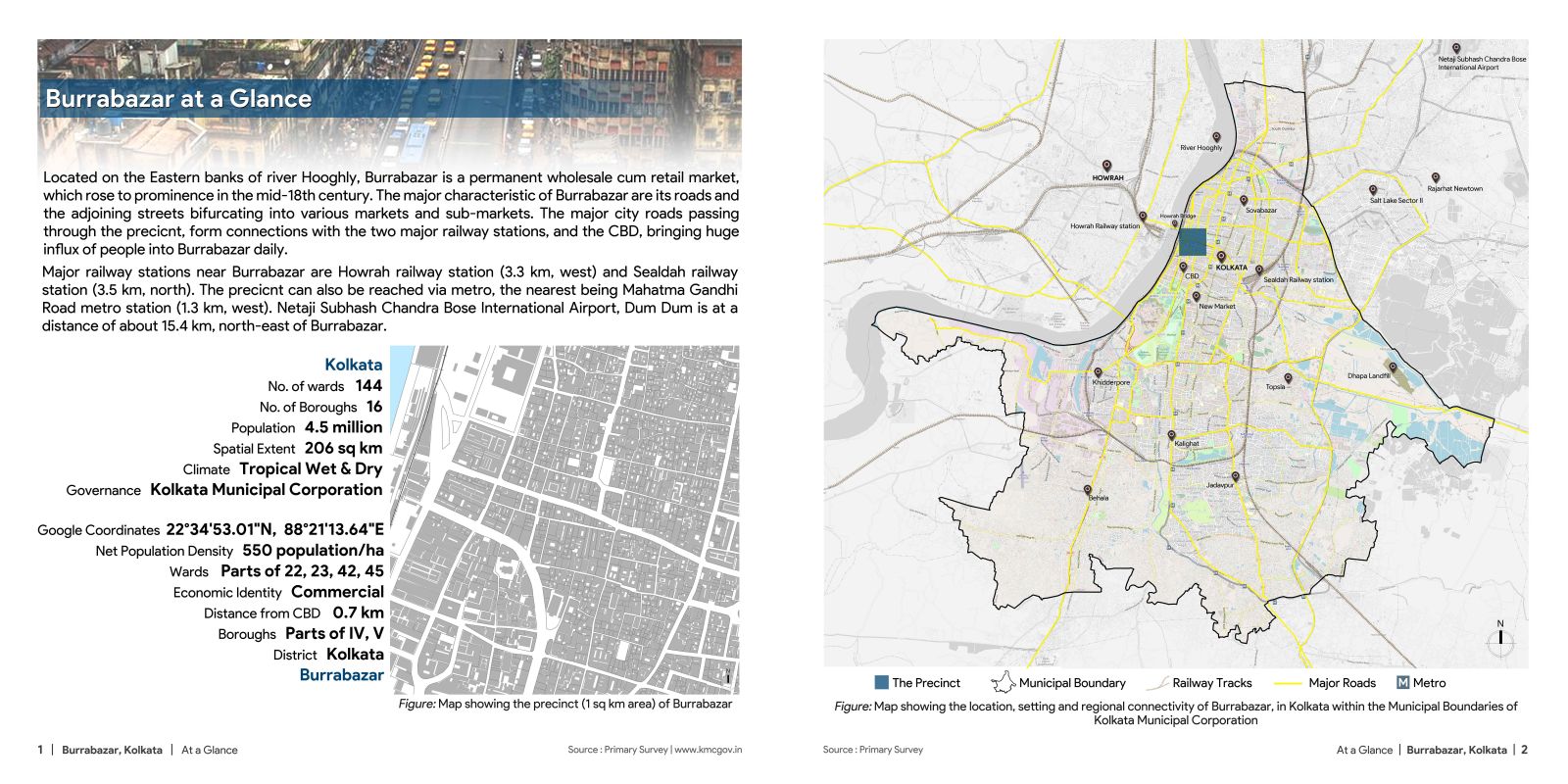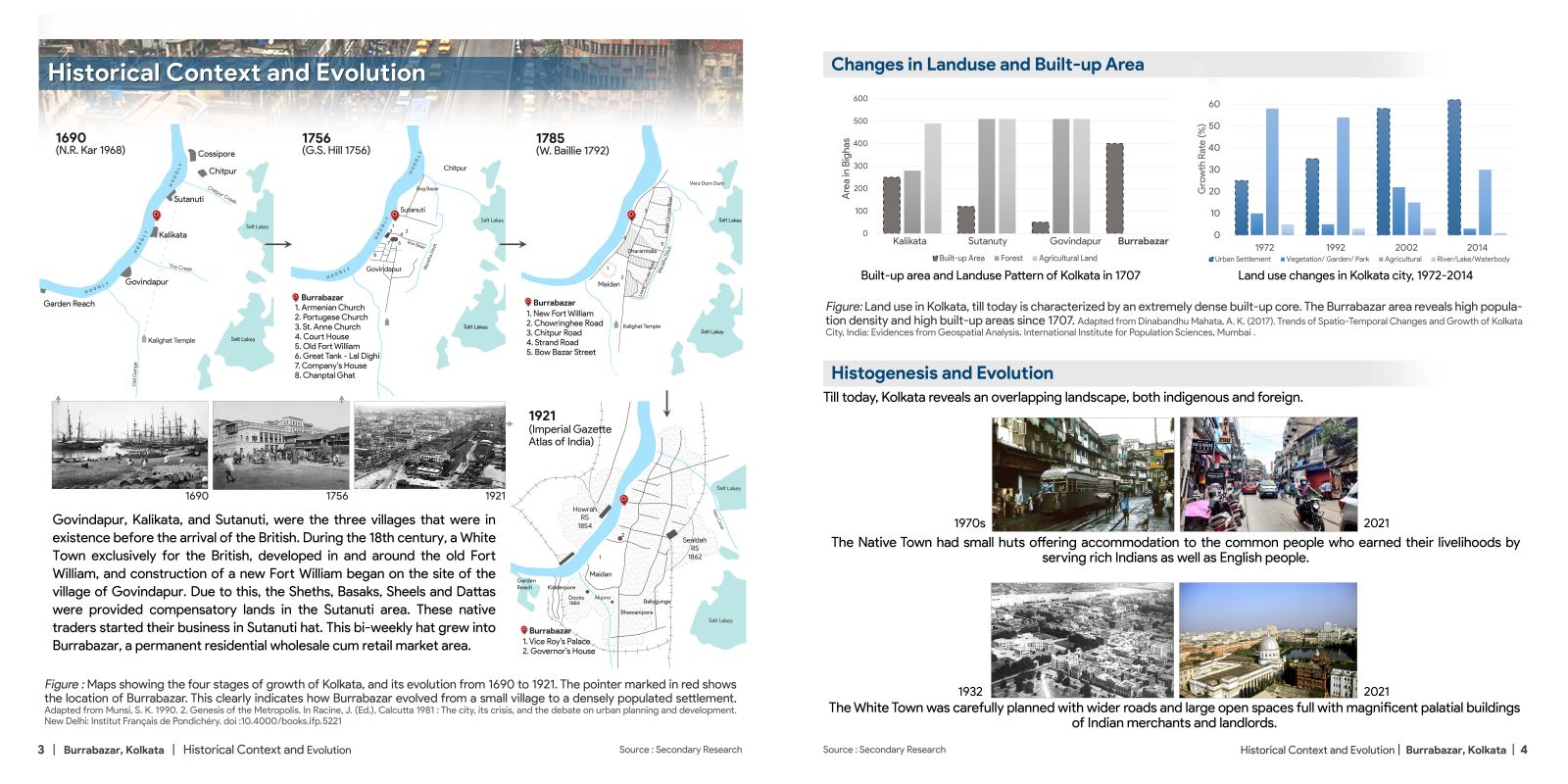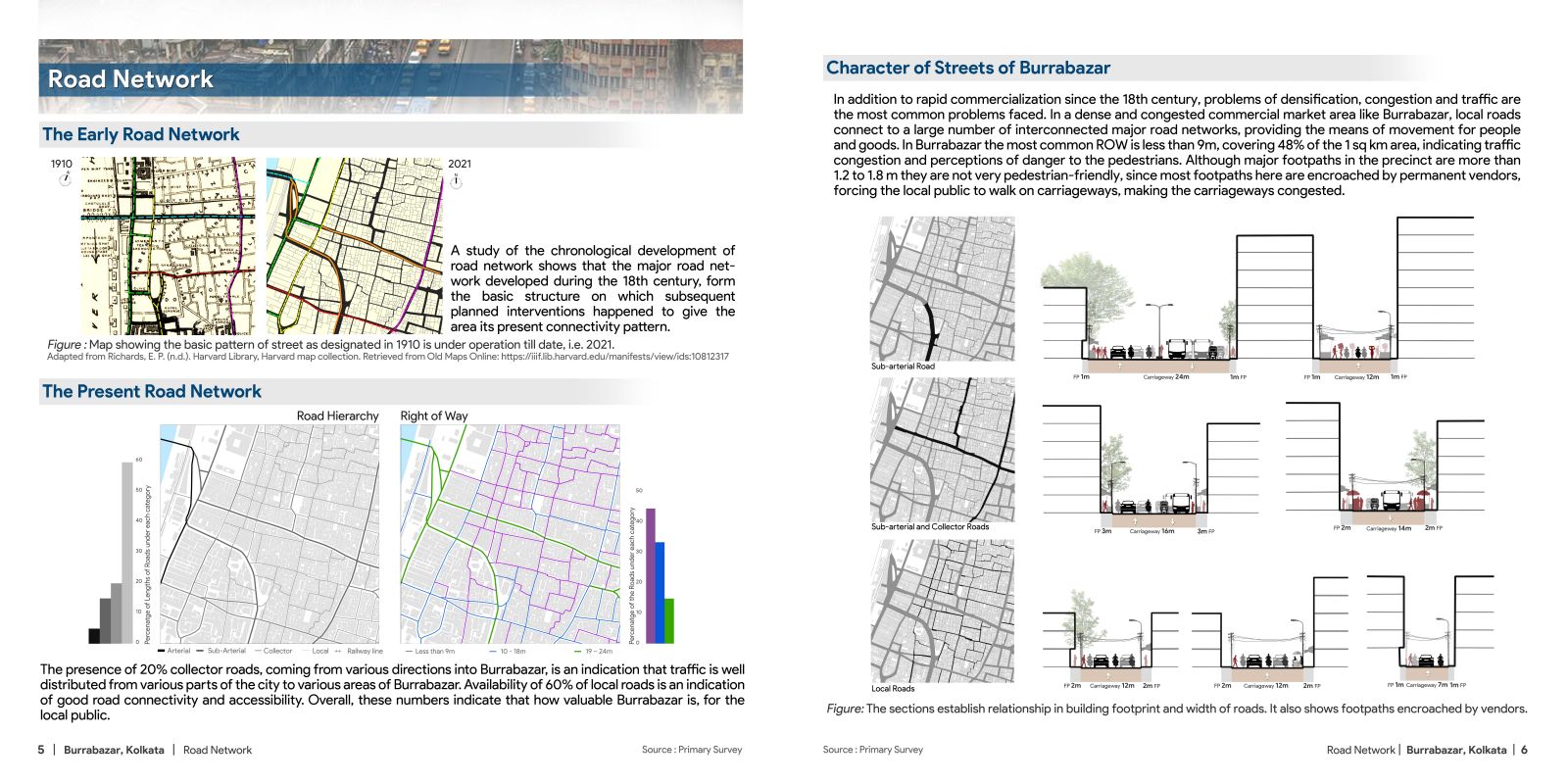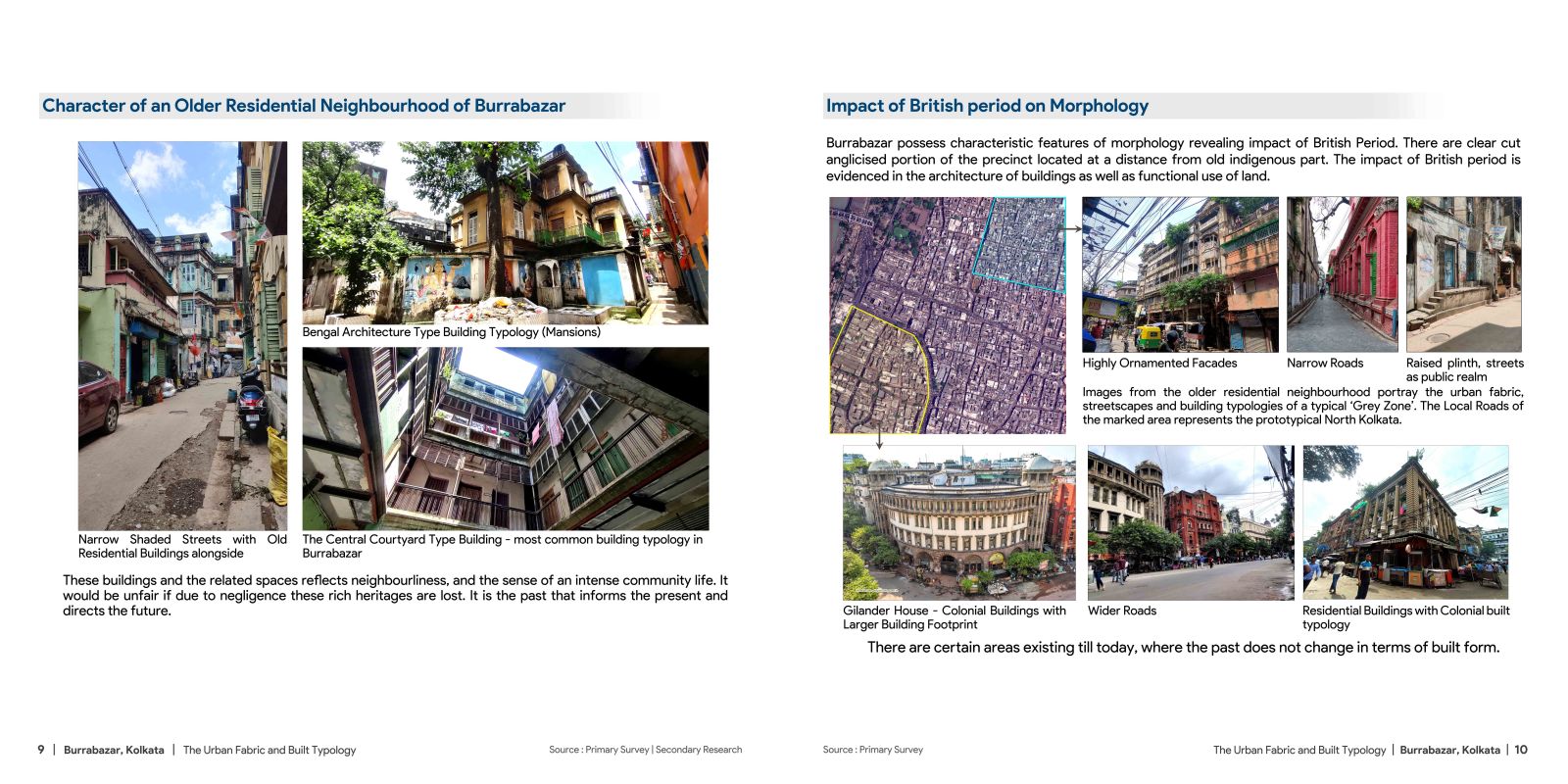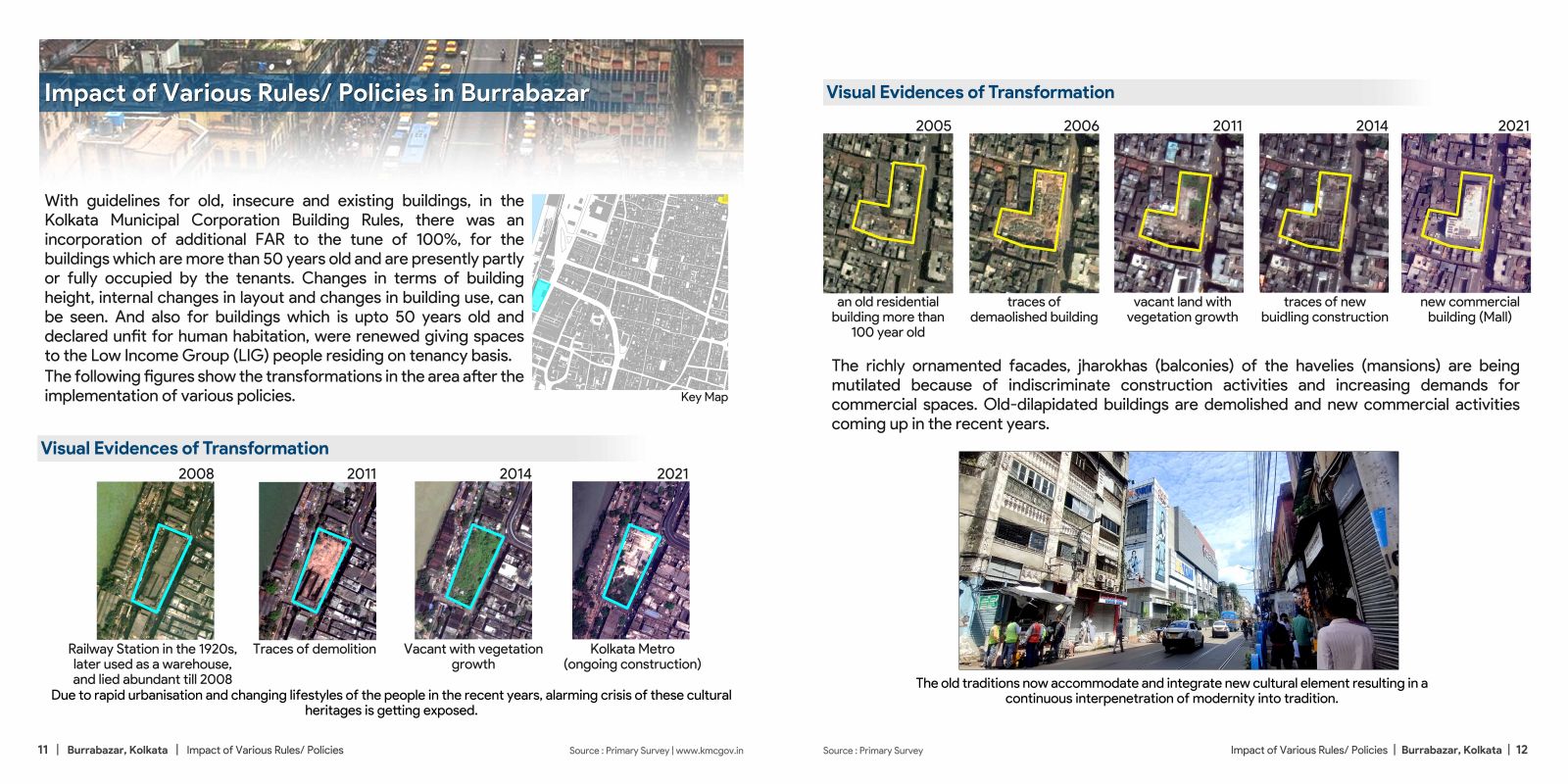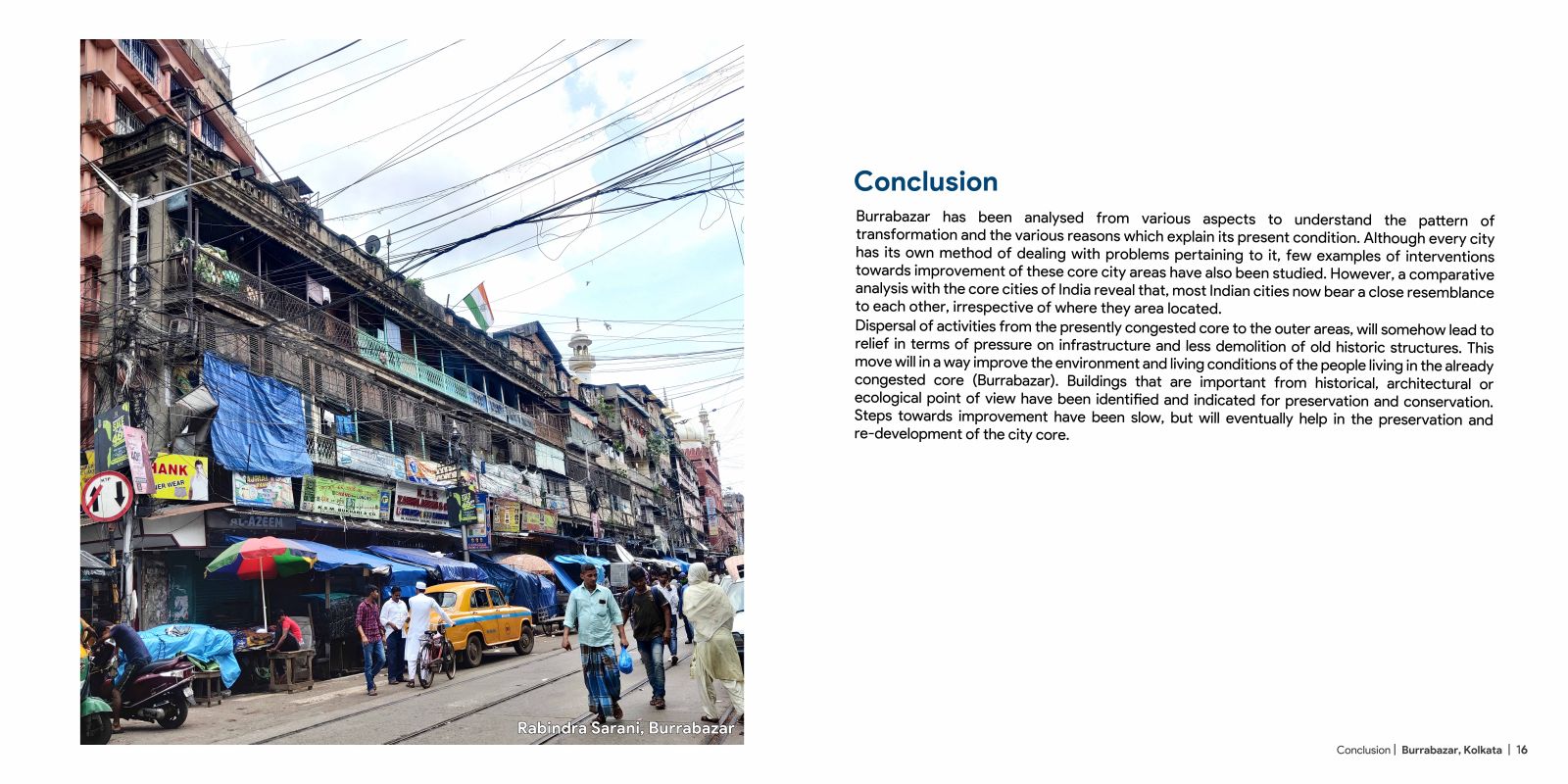Your browser is out-of-date!
For a richer surfing experience on our website, please update your browser. Update my browser now!
For a richer surfing experience on our website, please update your browser. Update my browser now!
Burrabazar, situated on the eastern banks of River Hooghly, is a permanent wholesale cum retail market, which rose to prominence from the mid 18th century. The present Burrabazar area, which is the ‘inner city’ or the ‘city core’, contains parts of erstwhile Kalikata and Sutanuti villages, which till now has managed to maintain its built form and street hierarchy as it were there during the days of its establishment. The urban growth and the land use pattern of the port city of Kolkata is a sign of colonial legacy. Throughout the years, large parts of Burrabazar became progressively de-gentrified and degenerated, due to the focus of the government being on shifting people from the ‘city core’ to the outer newly planned developments and townships.
